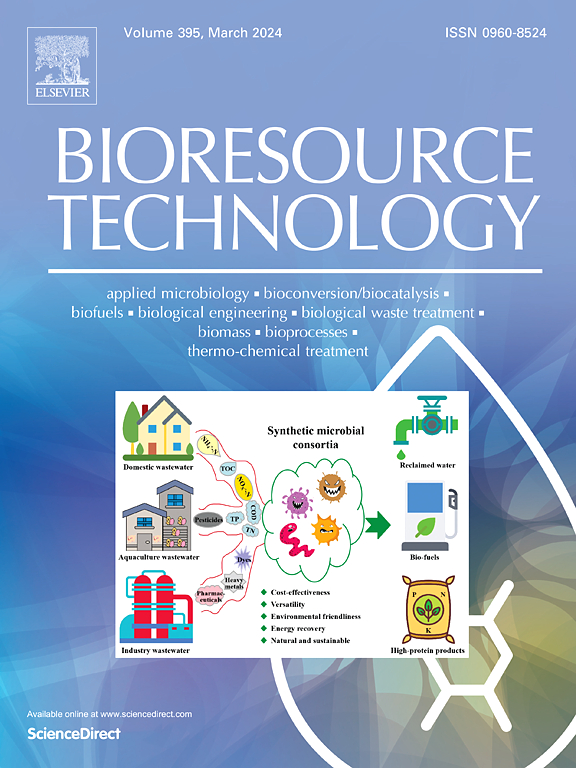Improved reactor design enables productivity of microbial electrosynthesis on par with classical biotechnology
IF 9
1区 环境科学与生态学
Q1 AGRICULTURAL ENGINEERING
引用次数: 0
Abstract
Microbial electrosynthesis (MES) converts (renewable) electrical energy into CO2-derived chemicals including fuels. To achieve commercial viability of this process, improvements in production rate, energy efficiency, and product titer are imperative. Employing a compact plate reactor with zero gap anode configuration and NiMo-plated reticulated vitreous carbon cathodes substantially improved electrosynthesis rates of methane and acetic acid. Electromethanogenesis rates exceeded 10 L L–1catholyte d–1 using an undefined mixed culture. Continuous thermophilic MES by Thermoanaerobacter kivui produced acetic acid at a rate of up to 3.5 g L−1catholyte h−1 at a titer of 14 g/L, surpassing continuous gas fermentation without biomass retention and on par with glucose fermentation by T. kivui in chemostats. Coulombic efficiencies reached 80 %–90 % and energy efficiencies up to 30 % for acetate and methane production. The performance of this plate reactor demonstrates that MES can deliver production rates that are competitive with those of established biotechnologies.

经过改进的反应器设计可使微生物电合成的生产率达到传统生物技术的水平。
微生物电合成(MES)将(可再生)电能转化为二氧化碳衍生化学品,包括燃料。要实现该工艺的商业可行性,必须提高生产率、能效和产品滴度。采用零间隙阳极配置和镀镍钼网状玻璃碳阴极的紧凑型板式反应器大大提高了甲烷和醋酸的电合成率。使用未定义的混合培养物,电生甲烷率超过了 10 Lcatholyte-1 d-1。基维嗜热杆菌(Thermoanaerobacter kivui)的连续嗜热 MES 产生醋酸的速率高达 3.5 g Lcatholyte-1 h-1,滴度为 14 g/L,超过了无生物质保留的连续气体发酵,与基维嗜热杆菌在恒温器中的葡萄糖发酵相当。库仑效率达到 80 %-90 %,醋酸盐和甲烷生产的能量效率高达 30 %。这种平板反应器的性能表明,MES 的生产率可与现有的生物技术相媲美。
本文章由计算机程序翻译,如有差异,请以英文原文为准。
求助全文
约1分钟内获得全文
求助全文
来源期刊

Bioresource Technology
工程技术-能源与燃料
CiteScore
20.80
自引率
19.30%
发文量
2013
审稿时长
12 days
期刊介绍:
Bioresource Technology publishes original articles, review articles, case studies, and short communications covering the fundamentals, applications, and management of bioresource technology. The journal seeks to advance and disseminate knowledge across various areas related to biomass, biological waste treatment, bioenergy, biotransformations, bioresource systems analysis, and associated conversion or production technologies.
Topics include:
• Biofuels: liquid and gaseous biofuels production, modeling and economics
• Bioprocesses and bioproducts: biocatalysis and fermentations
• Biomass and feedstocks utilization: bioconversion of agro-industrial residues
• Environmental protection: biological waste treatment
• Thermochemical conversion of biomass: combustion, pyrolysis, gasification, catalysis.
 求助内容:
求助内容: 应助结果提醒方式:
应助结果提醒方式:


